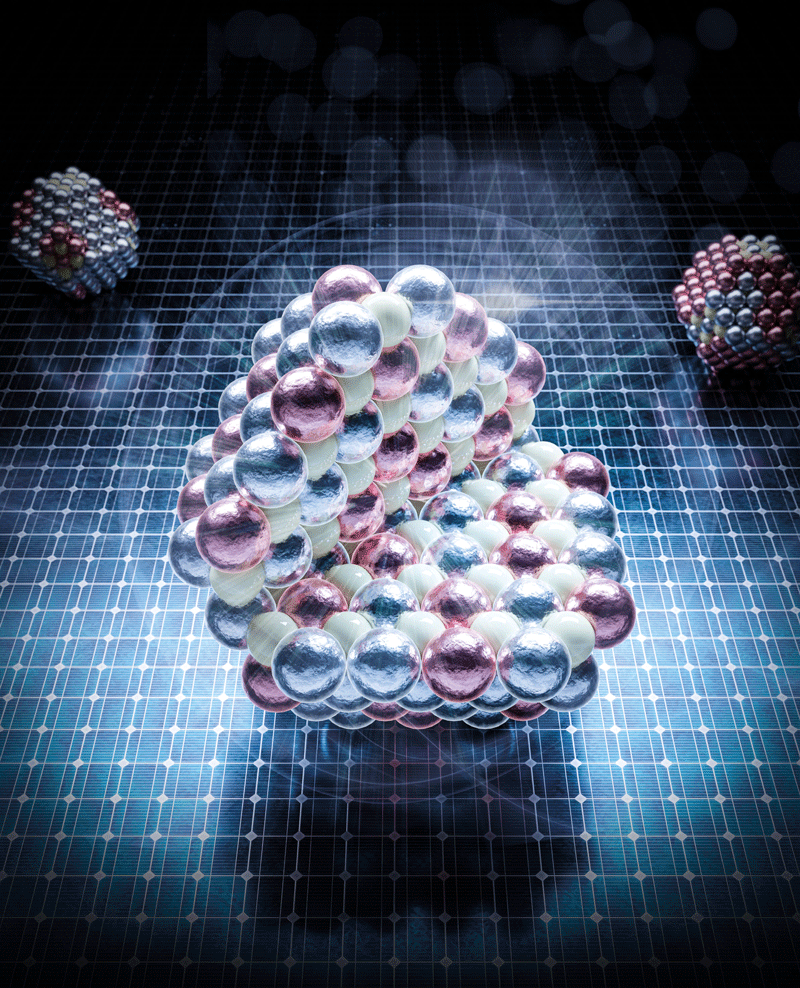Efficiency record for solar cell material
A novel technique achieves a ‘record-breaking’ solar power conversion efficiency of 9.1%, claims an international team of researchers at Imperial College London, University College London (UCL), UK, and The Institute of Photonic Sciences (ICFO) in Barcelona, Spain.

Using silver-bismuth-sulphur (AgBiS2) nanocrystals, they propose a novel, non-toxic and low-cost alternative to expensive and energy intensive silicon in solar cells.
The team has been studying bismuth-based solar materials for some time as they enable the cells to maintain their efficiency for long periods – but have previously struggled to reach power conversion above 5%.
Dr Gerasimos Konstantatos, Professor at ICFO, explains, ‘The engineering of the multinary systems with cation disordered, AgBiS2 colloidal nanocrystals has proven to offer an absorption coefficient higher than any other photovoltaic material used to date, enabling highly efficient, extremely thin, absorber photovoltaic devices.’
To improve performance, the researchers initially created a theoretical model of this material, from which they have predicted that controlling the distribution of silver and bismuth atoms in the nanocrystals could enhance the absorption and hence cell efficiency. They have engineered a layer of nanocrystals in the cell with an unconventional approach called ‘Cation Disorder Engineering’.
‘Cation Disorder Engineering refers to controlling the distribution of the ‘cations’, which are metal atoms, in our material,’ says Seán Kavanagh, co-first author and Research Postgraduate at Imperial’s Department of Materials and UCL’s Department of Chemistry, where he is supervised by Professor Aron Walsh and Professor David Scanlon.
‘We found that the initial synthesised material has an inhomogeneous distribution of cations where you have different parts of the material that have higher concentrations of silver with lower concentrations of bismuth, and vice versa. By applying a post-synthesis treatment (annealing in this case), we were able to control or ‘engineer’ the distribution of these cations to be homogeneous (evenly spread), yielding optimal absorption and thus efficiency.’
By depositing the nanocrystals layer-by-layer, the researchers have built a device that they say is 30nm-thick, 100 times thinner than current commercial solar cells.
Upon illumination from artificial sunlight, ultra-thin AgBiS2 material can convert power at an efficiency of 9.1%.
Different annealing temperatures and cation distributions in the crystalline arrangement deliver an absorption of five to 10 times more than any other material currently used in solar technology, claims the team.
The material has been tested at the ICFO through absorption measurements, X-ray diffraction to measure the crystal structure, and X-ray photoelectron spectroscopy to measure the chemical environment of atoms in the material. Yongjie Wang, Researcher at ICFO, adds, ‘After grasping control of the process and optimisation of the full stack, we finally found a highly reproducible structure for efficient solar cells with improved stability.’
Scanlon describes, ‘Finally, of course, the material was tested by making solar cells…testing their performance using electrical and efficiency measurements.’
He shares that these materials can be grown from solution and at room temperature, suggesting low manufacturing costs and scalability. ‘This is in contrast to other conventional solar cell materials like silicon and gallium-arsenic which require high-temperature (high-energy demand) and carefully controlled crystal growth procedures.’
‘Moreover, the ultra-thin size ensures that the material demand is quite low, so precursor supply would not be an issue. These factors suggest an excellent scalability of this material to an industrial level,’ Walsh comments.
Kavanagh suggests, ‘This solution could be applied to other ‘disordered’ materials like ZnSnN2 or AgSbSe2, where again we can have different distributions of metal atoms in the material.
‘The optimal homogeneous distribution we predict here may not be the best scenario in other materials, with this actually being dependent on the specific chemistry of the material...Our results show disorder in the distribution of atoms is not necessarily a bad thing for performance which has previously been the conventional wisdom.’

